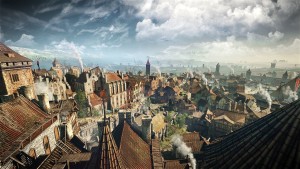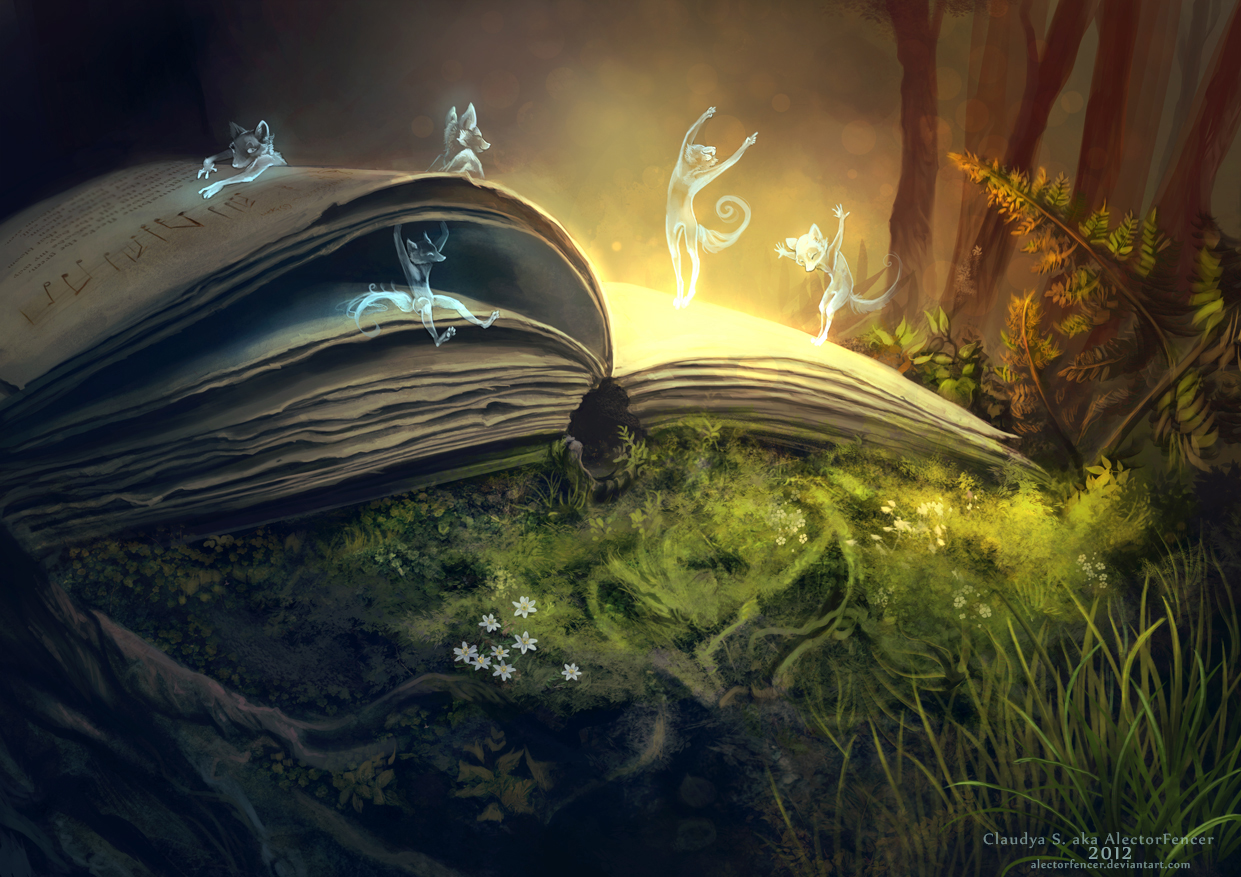 Three Rings for the Elven-kings under the sky,
Three Rings for the Elven-kings under the sky,
Seven for the Dwarf-lords in halls of stone,
Nine for Mortal Men, doomed to die,
One for the Dark Lord on his dark throne
In the Land of Mordor where the Shadows lie.
One Ring to rule them all, One Ring to find them,
One Ring to bring them all and in the darkness bind them.
In the Land of Mordor where the Shadows lie.
Lord of the Rings by JRR Tolkien
Our journey through time has finally led us to our contemporary period. This period has witnessed an explosion of fantasy works and the creation of many new sub-genres. Fantasy has now become a major genre, and has spread from books to: comics, films, anime, video games, art, role-playing games, virtual reality and blogs. For the last 25 years I have been fascinated, like many others, by books such as The Lord of the Rings, The Chronicles of Amber, books from HP Lovecraft and of course A Song of Ice and Fire. We are going to dig into all this, after our usual introduction to the historical background of the period.
The contemporary period started with the First World War in 1914. It encompasses the Russian Revolution in 1917 and the following creation of the Soviet Union. After the war, the Roaring Twenties brought social, artistic and cultural dynamism. Jazz blossomed, Art Deco peaked. A break with traditions, embraced by the flappers, was a defining factor of this period. Modern technology, like automobiles, radio, and movies brought modernity to a large part of the population. Significant changes in lifestyle were brought by inventions, discoveries, extensive industrial growth and a rise in consumer demand and aspirations. By mid-1920, the roaring twenties spread from the US to Europe.
This booming period was brutally stopped by the Wall Street crash of 1929, which led to the Great Depression. It was the largest and most important economic depression of the 20th century. In Europe, the depression led to the rise of fascism and then the Second World-War. The sinister events that are well remembered from this war are the Holocaust and the dropping of atom bombs in Japan.
Followed the Cold War era from the end of the war until early 1990. This period was marked by military coalitions, espionage, weapons development, invasions, propaganda and competitive technological development (the Space age). And of course the nuclear arms race between the US and the Soviet Union. Finally, in 1991, the Soviet Union collapsed, which ended the Cold War.
The world’s per-capita gross domestic product (GDP) grew by a factor of five during the 20th century. That is much more than all earlier centuries combined. Due to progress of medicine, the world life expectancy increased by more than two decades.
Increased communications contributed to democratization, while at the same time making brutal dictatorships and wars on an unprecedented scale possible.
Great technological and scientific progress brought more advanced airplanes, space exploration, nuclear technology, advancement in genetics, computers, mobile phones and the Internet.
In terms of literature, many famous writers populate this period. Just to name a few (very subjectively): Virginia Woolf, James Joyce, Agatha Christie, Franz Kafka, George Orwell, John Steinbeck, Arthur C. Clarke, Isaac Asimov, Philip K. Dick, John Le Carré, Stephen King, Umberto Eco, Salma Rushdie and Ian McEwan.
On the fantasy front, many genres were created, like: High Fantasy, Sword and Sorcery, Fairytale Fantasy, Dark Fantasy, Magical Realism, Science Fantasy, Steampunk, Heroic Fantasy, Historical Fantasy, Low Fantasy, Gothic Fiction and Ghost Story. And writers are still pushing the limits of fantasy and creating new genres over the years, so that we can revel in all the great stories to come.
Fantasy became popular in pulp magazines in the 20’s. In 1923, the first all-fantasy fiction magazine, Weird Tales, was created. Many other similar magazines followed, in particular The Magazine of Fantasy and Science Fiction. Pulp magazines were instrumental in bringing fantasy fiction and science fiction to a wide audience both in the US and UK. At that time the two genres began to be associated with each other. In 1932, Weird Tales published a first story of Conan the Barbarian by Robert E. Howard. In 1939, a first story of Fafhrd and the Gray Mouser by Fritz Leiber, was published in Unknown. By 1950, Sword and sorcery fiction had begun to find a wide audience.
High fantasy also started getting noticed. In particular, in 1937 JRR Tolkien published The Hobbit and in 1954-55 The Lord of the Rings. In the late 60’s the genre reached new heights of popularity. Other series, like The Chronicles of Narnia, the Earthsea books or The Lion, the Witch and the Wardrobe, helped cement the genre’s popularity. This popularity continued to increase during the 21st century, as evidenced by the Harry Potter series by JK Rowling and George RR Martin’s A Song of Ice and Fire.
The last 100 years have seen a definitive increase in the number of mediums available to relate a story, the new ones being: comics, blogs, role-playing games, anime (and animation), video games and now virtual reality. And there is no reason why new types of medium shouldn’t appear in the future.
 Films have been a very popular way to make people dream and convey visual representation of fantasy worlds that are normaly constructed in the mind. The number of fantasy films coming out is now higher than ever. The most common sub-genres are High Fantasy and Sword and Sorcery. And the most famous examples are: The Lord of the Rings, Conan the Barbarian, Harry Potter, The Chronicles of Narnia, Game of Thrones, Eragon, The Golden Compass and the Twilight saga. In terms of animation and Anime, we have: Spirited Away, Princess Mononoke, The Vision of Escaflowne, Shrek, Brave and Frozen.
Films have been a very popular way to make people dream and convey visual representation of fantasy worlds that are normaly constructed in the mind. The number of fantasy films coming out is now higher than ever. The most common sub-genres are High Fantasy and Sword and Sorcery. And the most famous examples are: The Lord of the Rings, Conan the Barbarian, Harry Potter, The Chronicles of Narnia, Game of Thrones, Eragon, The Golden Compass and the Twilight saga. In terms of animation and Anime, we have: Spirited Away, Princess Mononoke, The Vision of Escaflowne, Shrek, Brave and Frozen.
Comics is another medium that has conveyed stories of fantasy, examples are: Thor, Doctor Strange, House of Mystery or Elfquest.
I have been playing tabletop role-playing games for many years and there the most popular genre is fantasy. The game that made fantasy so popular is Dungeons & Dragons and it remains the most successful tabletop role-playing game to this day. Other examples are: Elric, Warhammer, Middle Earth Role Playing and Runequest.
One of my favourite games is Amber (based on Roger Zelazny’s The Chronicles of Amber). Its main differentiation is its focus on storytelling and role-playing rather than on the game play mechanics. It offers a perfect formula to let your mind wander in fantasy world and live memorable experiences of role-play with your friends.
The popularity of fantasy in tabletop role-playing has later on spread to collectible card games, such as Magic: the Gathering.
Fantasy is also prominent in video games, in particular, and not surprisingly, in role-playing video games. A perfect example is the Final Fantasy series. But there are numerous other examples of very successful fantasy based video games: Skyrim (from The Elder Scrolls series), World of Warcraft, Baldur’s Gate, Dragon Age and The Witcher. To give you an idea of the popularity of those games, Final Fantasy VI has sold 10 million copies worldwide, Skyrim over 20 million copies and World of Warcraft had 10 million subscribers at its peak.
This love for fantasy, mostly coming from role-playing games, anime and video games has seen the rise of the Cosplay culture and all the conventions accompanying the culture.
Going further, fantasy has also spread to painting and sculpture with Fantasy Art.
As we have seen, fantasy is now more active than ever and continues to make people dream about epic adventures and amazing worlds. The explosion of mediums used to relate stories has made fantasy very accessible to anyone. It is a huge market and the recent growing excitement for virtual reality has made fantasy an even more compelling offering.
I hope you have enjoyed this journey of fantasy through time. It has certainly been an adventure for me! The historical research has re-awakened fond memories in me, I believe it did in you too. I also hope you enjoyed the little side stories surrounding the publication of certain books.
It’s now time to leave fantasy behind for a little while and embark on new adventures, my friend. I hope to see you around in a world or another. And don’t hesitate to share your feelings and experiences in the comment box below!









Please share your comments